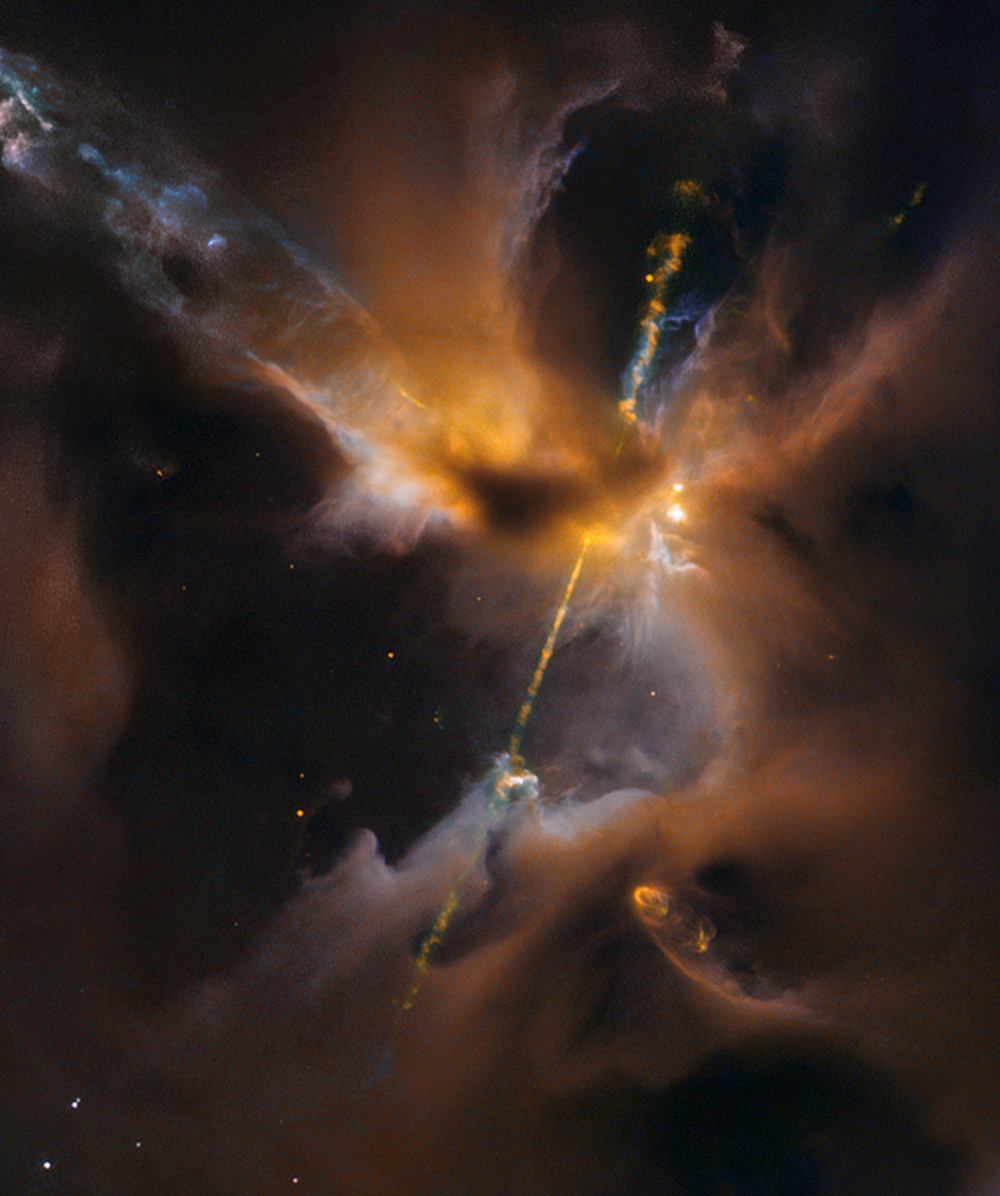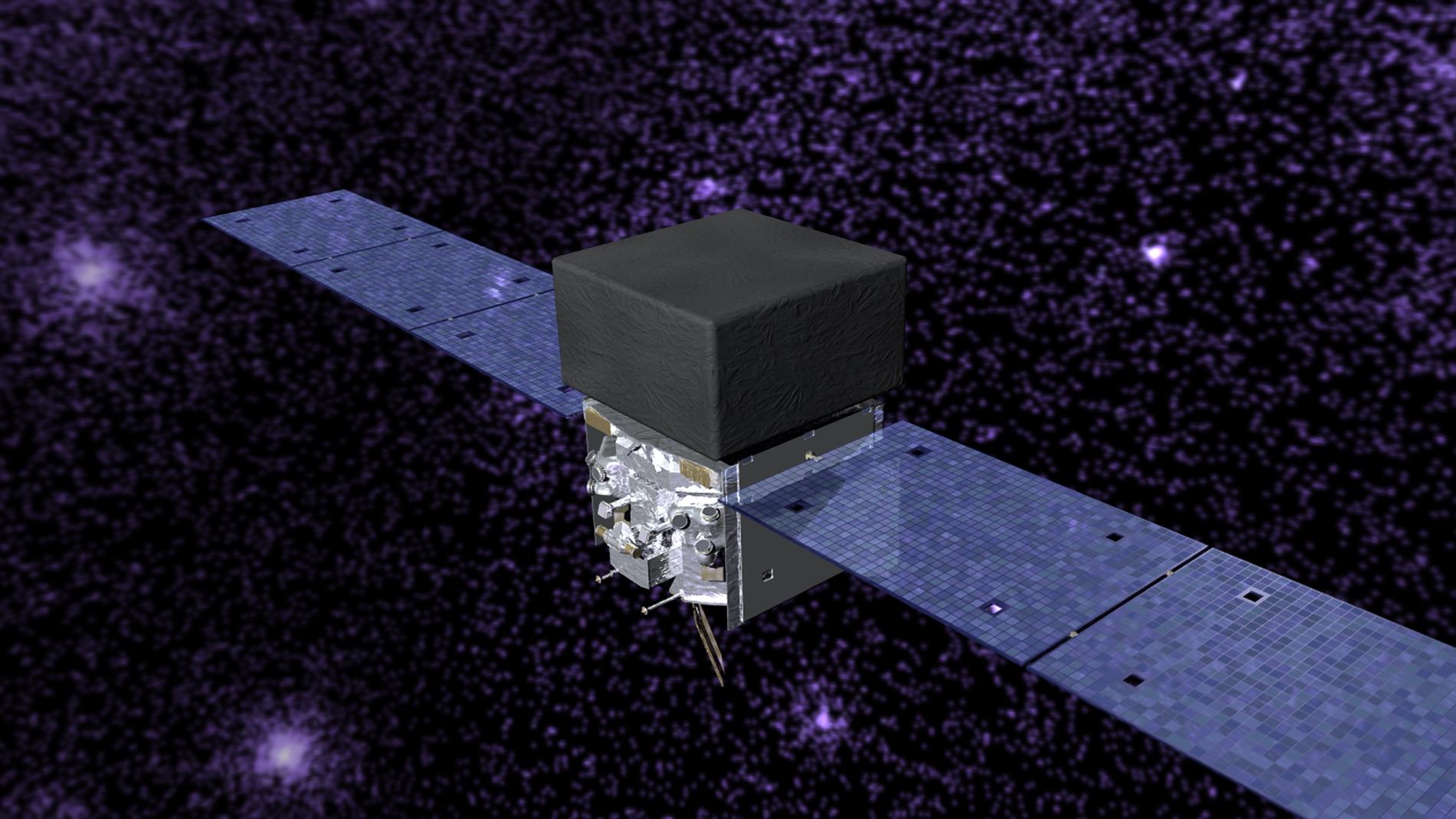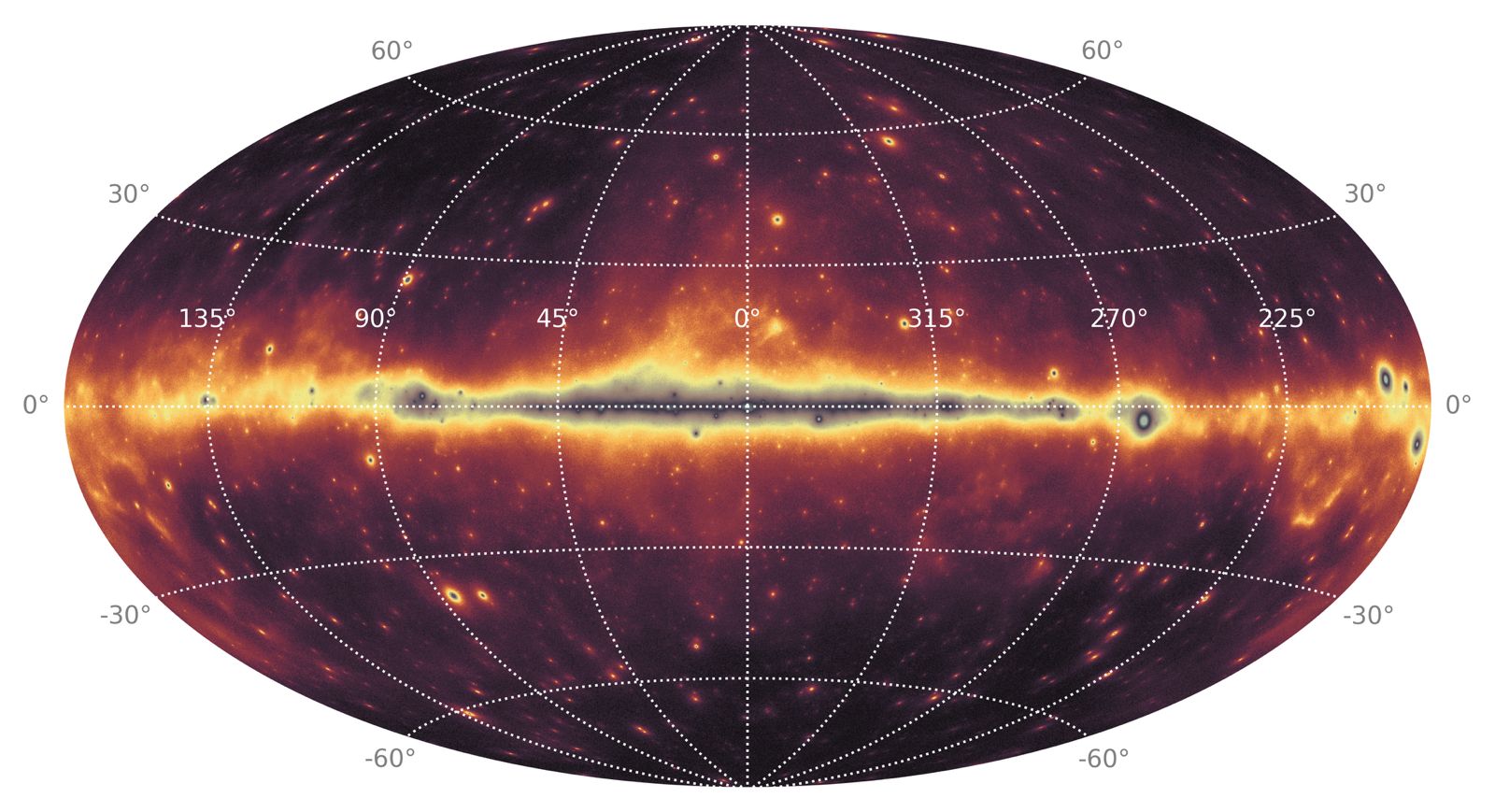Gamma rays detected in protostars provide new insights into cosmic ray origin
The work, led by the Instituto de Astrofísica de Andalucía (IAA-CSIC), has identified gamma-ray emission from HH 80-81, one of the most powerful jets ejected by a massive protostar in formation.
The results, published in Astronomy & Astrophysics, mark a step forward in the understanding of one of the greatest enigmas in astrophysics: the origin of cosmic rays.
Although stars have been studied for centuries, their formation remains an enigmatic process, especially in the case of the most massive stars. They are born in very dense regions of gas and dust that make them difficult to observe, and they are less frequent than other protostars. Even so, their impact on their surroundings is enormous: they can launch powerful jets of matter - or jets - that strike the nearby gas and generate shock waves capable of accelerating particles to almost the speed of light. These processes could be behind the origin of cosmic rays, one of the great mysteries of astrophysics.

Optical image of HH 24 taken with the Hubble Space Telescope, an example of a protostellar jet Credit: NASA and ESA; Acknowledgment: NASA, ESA, the Hubble Heritage (STScI/AURA)/Hubble-Europe (ESA) Collaboration, D. Padgett (GSFC), T. Megeath (University of Toledo), and B. Reipurth (University of Hawaii)
Now, a scientific team has confirmed that the HH 80-81 system - one of the most powerful jets known, launched by a very massive protostar still in formation - emits gamma rays, the most energetic form of light in the Universe. This is a rare detection for such objects, and raises the question of whether such systems have the ability to accelerate protons, the main component of cosmic rays reaching Earth. The results are published in the journal Astronomy & Astrophysics.
“This discovery is important because it brings us one step closer to understanding the origin of cosmic rays, and shows that stars in formation may play a key role in this mystery that is more than a hundred years old,” explains Javier Méndez, researcher at the IAA-CSIC and lead author of the study.
Likewise, Rubén López Coto, second author of the study and researcher also at the IAA-CSIC, adds: “Discovering the origin of cosmic rays is essential to understand the evolution of the universe, and this is another piece in the puzzle to unveil the acceleration processes of these particles in our galaxy”.
A PROTOSTAR CAPABLE OF GENERATING GAMMA RAYS
Until now, it was known that certain extreme objects in the Universe - such as supernova remnants or black holes in active galactic nuclei - could accelerate particles to very high speeds and generate cosmic rays: tiny but highly energetic particles that arrive steadily at Earth from space. However, it was not clear whether phenomena as early as star formation could also play such a role.
This study, led and developed by the Instituto de Astrofísica de Andalucía (IAA-CSIC), has shown for the first time that a jet of matter ejected by a massive protostar can emit gamma rays. This type of emission can only be generated by subatomic particles accelerated in extremely violent environments, where electromagnetic fields play a key role. This suggests that protostellar jets could be part of the so-called non-thermal universe.
To determine this result, the IAA-CSIC has analysed fifteen years of data from NASA's Fermi-LAT space telescope, a space observatory specialised in gamma-ray observation. This long series of observations has allowed a significant improvement in sensitivity with respect to previous studies, and a more precise isolation of the signal associated with the HH 80-81 jet.

Illustration of the Fermi gamma-ray space telescope. Credit: NASA’s Goddard Space Flight Center/Conceptual Image Lab
“Since this is a very faint source located close to the plane of the Milky Way - a region with a lot of background emission - it was necessary to apply strict criteria to filter the data and focus only on the higher energies, where the signal is clearer,” says the first author of the study.
In addition, the research team analysed in detail the origin of the detected emission, as there are several sources in the observed area that could be responsible. However, the previously detected non-thermal radio frequency and X-ray characteristics of the HH 80-81 jet, together with its exact coincidence with the emission region, point to it as the most likely candidate. These results suggest that HH 80-81 could generate gamma rays through particle acceleration processes, which reinforces its possible role as a possible source of the cosmic rays reaching Earth.

View of the galactic plane on the celestial sphere with gamma rays with the Fermi-LAT satellite. Credits: J. Méndez-Gallego & S. Menchiari
“The study thus opens up new ways to investigate this type of system using gamma rays, and raises the need for future observations to better understand the extreme physics hidden in the birth of the most massive stars,” says Javier Méndez (IAA-CSIC). He concludes: "It also opens a new window to study how these extreme objects influence the evolution of the interstellar medium and the dynamics of our galaxy.”
- Exploring the capability of the HH 80-81 protostellar jet to accelerate relativistic particles
- https://www.aanda.org/articles/aa/full_html/2025/03/aa52473-24/aa52473-24.html
- Javier Méndez Gallego - jmendez@iaa.es
- Instituto de Astrofísica de Andalucía (IAA-CSIC)
- Unidad de Divulgación y Comunicación
- Amanda López – alm@iaa.es
- Emilio García – garcia@iaa.es - 649 407 445 (vía whatssap)
- Celia Navas - navas@iaa.es
- https://www.iaa.csic.es
- https://divulgacion.iaa.csic.es

